The April 13 fundraiser features music by the Travis Book Band.


The April 13 fundraiser features music by the Travis Book Band.

“This is the largest single volunteer day in the Pisgah Ranger District and brings together all kinds of people and partners,” says Marielle DeJong, donor engagement officer for The Pisgah Conservancy

The celebration of World Water Day benefits local environmental nonprofit MountainTrue.

After Helene destroyed familiar trails and urban routes, local running groups are finding new paths and proving their resilience in the face of adversity.

Tessa Fontaine hits the sidewalks of the River Arts District to experience rucking, a low-impact exercise based on military training activities.

What do Vampire Weekend, Kevin Morby and Dr. Dog all have in common? They’re all on River Whyless drummer Alex McWalters’ ideal playlist for running in Western North Carolina.

Among a handful of city recreation sites updated with 2016 bond money, Murphy-Oakley Park’s playground relaunched in late June with an adaptive design and equipment that’s accessible to residents of all abilities.
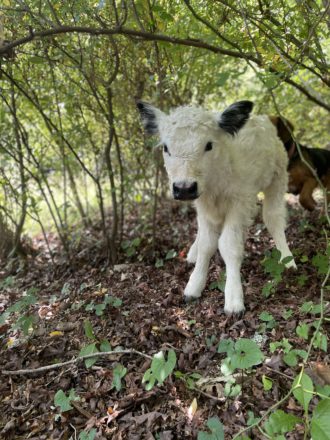
The Appalachian Sustainable Agriculture Project is gearing up for its annual Farm Tour in September. Also in local green news, a new solar lending program from Sugar Hollow Solar, the West Asheville Garden Stroll spotlights the Horney Heights neighborhood, N.C. Arboretum hosts Monarch Butterfly Day and more.
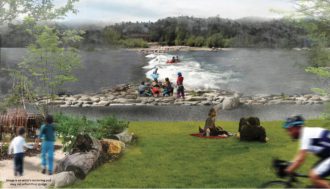
From Woodfin to Canton, Hendersonville to Brevard, local communities are embracing outdoor recreation as a way to drive economic growth and provide recreational opportunities for residents.

Since January of this year, Buncombe County has received 104 reports of Lyme, says Buncombe County spokesperson Stacey Wood. Of those, 19 have been confirmed cases, five met the definition for suspect or probable cases and 23 are currently under investigation.

Asheville-area health professionals are seeing itchy, sniffling allergy sufferers up to nine months of the year.
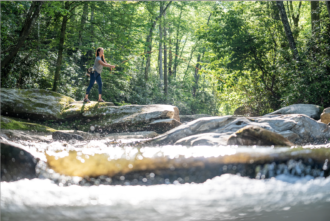
A renovation expected to begin next year at the 67-year-old Bobby N. Setzer Fish Hatchery in Brevard will diminish upcoming trout stockings in local rivers by two-thirds. However, the effect that renovation could have on tourism and businesses that rely on anglers is difficult to determine.
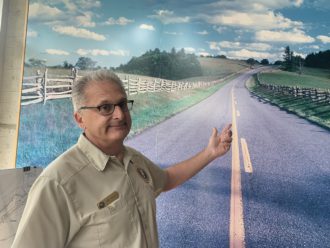
Part of its appeal is its uniqueness. The park is the road; the road is the park. Unlike other sites, where car access was at some point fitted into an already stunning landscape, the entirety of the Blue Ridge Parkway itself was fabricated with the intention of being the park.

Sarah Jones Decker, a volunteer at Carolina Mountain Club, discusses the joys of being outside with like-minded hikers.

Stefan Israel is a volunteer with Rock Crushers, which maintains hiking trails, particularly in the Gerton-Lake Lure area.
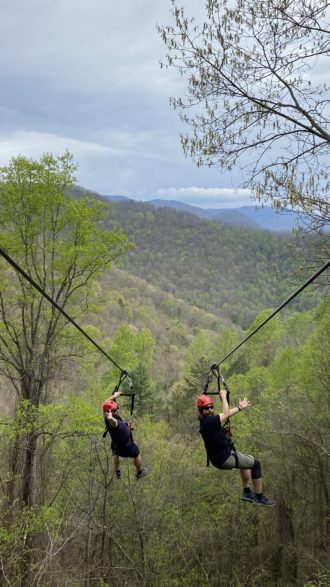
Our reporter and his musician friend see what Navitat Canopy Adventures is all about.

In February, Mountain BizWorks’ MADE X MTNS partnership, which seeks to expand WNC’s outdoor industry, released a study that noted outdoor activities such as backpacking, day hiking and vehicle camping generated an economic output of $4.9 billion per year for the region and resulted in 48,000 full-time jobs.

Asheville’s wellness culture is touted nationwide for its outdoor lifestyle and fresh mountain air. But less well known are the mycological wellness opportunities — that is, medicinal mushrooms — in our refrigerators and cupboards.

“The way [my bonsai] are constructed, it’s not based on what I was taught or what the books tell you to do,” says Arthur Joura, bonsai curator at The N.C. Arboretum. “It’s based on what I’ve seen in my own experience and run through the filter of my knowledge of art.

“When I started this job, almost 20 years ago, very few people used the French Broad River for recreation, and therefore no one really cared when it was polluted,” says Hartwell Carson, French Broad Riverkeeper with MountainTrue. “Now lots of people use the river everyday and there is a strong desire that we do better and protect the river,

Hood Huggers International founder and CEO DeWayne Barton, released his new book, “The CAP Playbook: Phase One,” on Aug. 14. The book’s Community Accountability Plan lays out a vision of creating a sustainable, inclusive and economically empowered culture in historically marginalized communities. Barton notes that the book is set up similarly to a football playbook, but instead of scoring touchdowns, the “plays” help achieve community goals.